Santa Barbara Drag Artists Step Out of the Shadows
Under the Rainbow
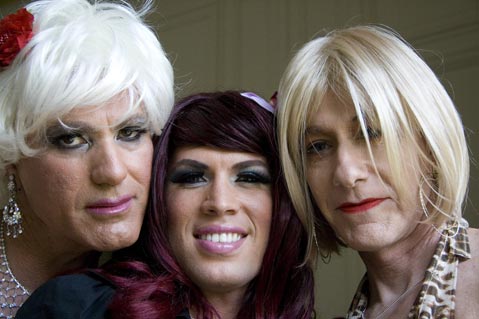
It’s a typical afternoon on State Street. A mix of locals and visitors amble along the sidewalk gleefully burdened with bags bearing the designer labels of their contents while others inhabit the restaurants and coffee shops that line either side of the downtown thoroughfare. But on this particular day, it’s not the snake handler or a live animal pyramid that are soliciting the public’s attention-it’s three majestic figures waltzing through the throng turning heads. While pretty people might not be that unusual for Santa Barbara, the realization that these lovely ladies were actually men was certainly turning most heads.
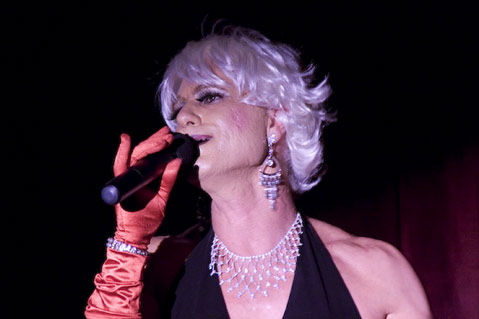
These are Santa Barbara’s drag queens, who will be bringing their culture out of the late-night, side-street bars and onto the popular stage at SOhO on June 2 for a cabaret-style extravaganza. On this Friday afternoon, three of these queens-Amber, Talandy, and Rica-are spending an afternoon to prepare for the big show by exploring some of the city’s more chic designer cosmetic and fashion houses. Meanwhile, they’re playing the muse to photographer Patricia Clarke, who’s served an integral role in turning the limelight their way. And as she shoots and they strut, the passersby are having just as much fun as the three participants.
“We were really embraced as we walked down the street, which was somewhat of a surprise to me,” beamed Amber, nee Stuart Carey, after the stroll. “I wasn’t sure that we would be received so positively. But people wanted to have their picture taken with us, they wanted to talk to us, and they wanted to find out more about us. They took an interest in us and who we are in the most wonderful way. It was a very moving experience, and it made me realize that we have come a long way.”
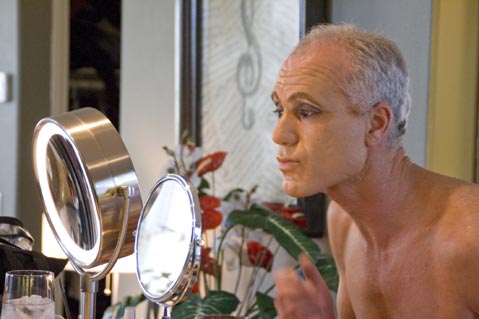
While the sojourn down State Street was a virgin crossing into daytime terrain, the drag scene in Santa Barbara does have a long, dynamic tradition. With the Wildcat Lounge having been a performance mainstay for the past 10 years, a succession of venues-such as Chameleon, Oasis, Fathom, Las Conchas, and the Gold Coast-helped nurture and sustain the movement, giving rise to such iconic performers as Natasha Camille, Audrey Heartburn, and Ineeda Cocktail.
But throughout the years, this late-night culture typically stamped its presence onto Santa Barbara’s extremes, which subsequently enshrouded drag art in obscurity. Away from the eyes of the general public and in the social shadows, this isolated evolution actually defined the art form-not just for the public, but for the performers, too.
“Everybody has their own response to this coming out,” explained Carey. “Some of the performers don’t want to have their photograph taken during the day because it makes them feel a little too vulnerable. Part of the mystique is that they like having that shroud of darkness draped around them so as to help create the illusion. But for others, like me, it’s an opportunity to step out of those shadows and show that we are normal people who are a part of everyday Santa Barbara life.”
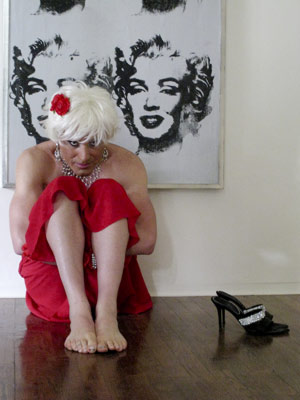
Empathetic Eyes, Inside and Out
This coming out has been a long time in the making, and photographer Patricia Clarke deserves much credit for helping the drag queens find the courage to share their culture with Santa Barbara. While executive director of the Santa Barbara Bowl Foundation in 2002, Clarke organized the first Babes at the Bowl, a ladies-only party to celebrate the completion of the venue’s remodeled restrooms. Clarke hired two drag queens for entertainment, explaining, “It was a perfect opportunity to introduce another way of interpreting femininity.” Six years later, Clarke’s connection to the drag community is “a wonderful full circle,” and this latest exhibit is the perfect way to “honor these soulful, often funny, and always fascinating performers.” She explained, “This project in Santa Barbara is a perfect extension of many years of travel and documenting communities around the world where men dressing and performing as women is not only considered a respected art form, but is often revered and highly regarded in spiritual and cultural terms.”
Clarke first met Stuart “Amber” Carey at a neighborhood party, where they struck up a fast friendship. A musician and visual artist himself, Carey had been contemplating how to bring greater understanding to the drag scene. After seeing an exhibit of Clarke’s photographs from Asia called Correspondences, he realized that she had a role to play. “I knew immediately that she was the person to photograph Santa Barbara’s drag world,” explained Carey, who then invited Clarke to a party with her camera.
Carey’s enthusiasm belies his relatively recent appearance on the drag scene. But his fervor for illuminating drag culture is firmly rooted in years of involvement with Santa Barbara’s gay community and his own life experiences. It’s an unquestionably personal stand, but one that forces everyone to look beyond our preconceptions.
“There is legitimacy to the art form, much more than what is recognized in this country,” Carey said. “If you look overseas, you can see that it is possible to accept it as another form of art. And, culturally speaking, people who are of transgender actually occupy places of great honor in other cultures. They are seen as being people who are special and not as freaks. And while we won’t get quite that far here, I think we can dissolve the sideshow aspect of it a little.”
For Carey, authenticity is the motivating factor behind his performing. This might seem contradictory when you’re talking about a man adopting a female persona, but the dresses, makeup, and flamboyant gesturing do stem from a very genuine place: They reflect a deep-seated yearning that has now found the appropriate outlet. And while drag may be a relatively new frontier for Carey, the gender flexibility that it represents has long been a facet of his experience.
“I do believe that we come into the world with these innate capabilities that quickly get stomped out of us in our social settings,” explained Carey. “And it is not just men who experience that-women, too, have their own experiences in that regard. Society has very rigid guidelines on gender. It is an exploration of that that is going on for me when I perform Amber. It is a wonderful way to address some of those things without being pedantic or like I am preaching from a soapbox.”
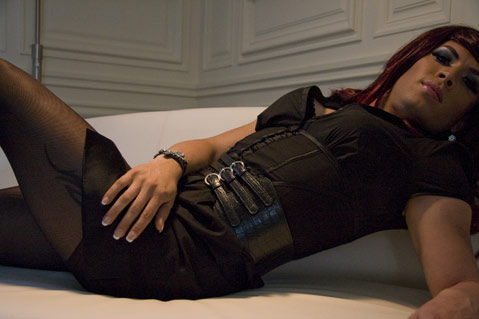
Taking It to the Stage
When the Rainbow Room takes command of SOhO next week to raise funds for the Pacific Pride Foundation-in conjunction with a preview of Clarke’s recent portraits-you can expect a show unlike any other Santa Barbara affair. As a ’50s cabaret theme flavors the night, Carey will be crooning classics from the American songbook along with a selection of timeless jazz standards. He’ll be fronting the same jazz ensemble that he does every weekend as a man, but this time in drag as Amber.
“There isn’t that much of a divergence actually,” said Carey. “I’m always seeking the same thing from the songs that I present, no matter whether I’m a man or appearing as a woman. But performing as a woman does give me the opportunity to embrace different things. I get the opportunity to sing songs that were written for a woman, and it’s quite a liberating experience for me as I get to express some of the internal aspects of myself that I had since being a child.”
Throw in a host of hometown performers with unique interpretations of drag-from Belladonna, Divina, Jamie, and Kassandra to Hazelnut Latte and Miss Kitty-music from jazz band X-Tet, and a deejay into the later hours, and it promises to be a fun night. And fun is something Carey feels is inherent to drag art and culture but also shouldn’t undercut its legitimate role in today’s world.
“We don’t take ourselves too seriously, but we take the art form very seriously,” he explained. “There’s a lot of humor in drag. And it’s a humor that is both very intelligent and can even be quite political. Humor played a major role when HIV and AIDS first made its ugly appearance. Drag art played a major role in not just bringing levity to what was a very tragic situation but also inciting political activism as well. It’s not just about campiness or superficiality or caricature-these things are the face of something that is very real for a lot of people.”
4•1•1
The Rainbow Room Drag Revue and Dance Party drops on SOhO (1221 State St.) this coming Monday, June 2, at 7:30 p.m. See sohosb.com or call 962-7776.



